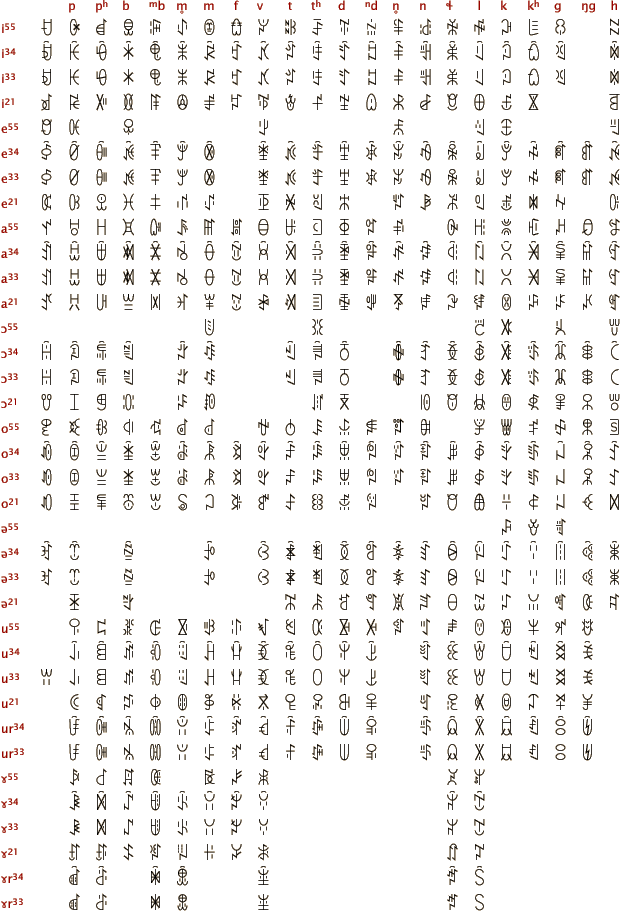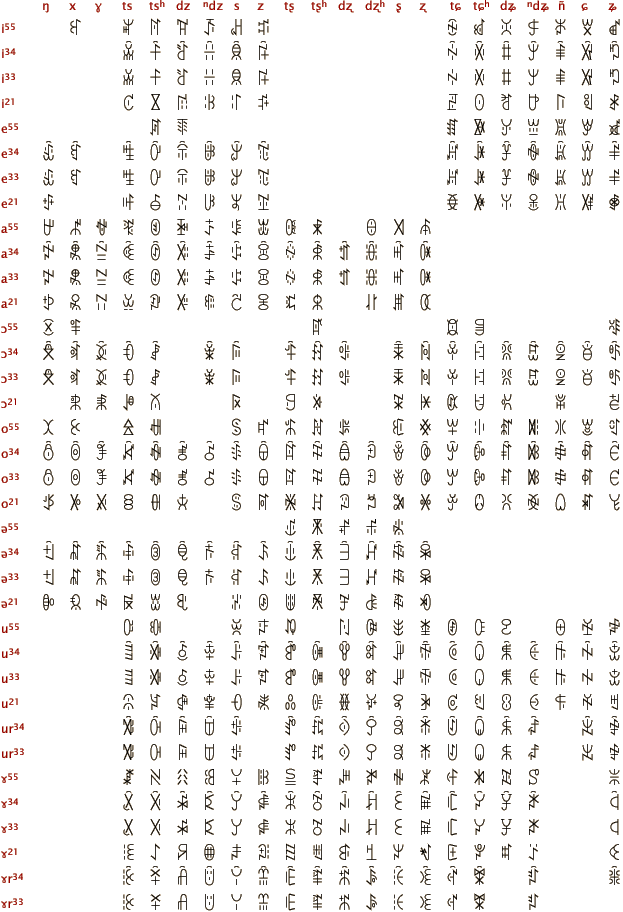Yi Scripts
Many non-Han (not culturally Chinese) ethnic groups in southwest China employ writing systems that were Chinese-based or Chinese-influenced. Collectively they are called "Siniform" scripts because they resemble Chinese in shape.
One of these Siniform scripts is the Yi script, employed to write the Yi or Lolo language (which belongs to the Tibeto-Burman language family). The Yi script is also known as Cuan, or Wei. The earliest surviving record of Yi dates from about 500 years ago. However, unlike other Siniform scripts, the form of its signs show a more indigenous development. Probably the form of its characters were not taken from Chinese, but instead appeared via stimulus diffusion from Chinese.
There are roughly eight to ten thousand Yi signs. Because there is a modern Yi script introduced in 1970, the old Yi writing system is named "Classic Yi". Like Chinese, Classic Yi is a logographic writing system in which a sign stands for a whole morpheme. Many signs are "simple", meaning that they cannot be broken down or be derived from other signs. These include characters for 'sky', 'earth', 'snake', 'hand', etc.

Like archaic Chinese, homophonous (same-sounding) words in Yi can also be represented by the same sign. For example, in the picture below, the sign for 'snake' is also used to represent 'gold', 'yellow', and 'hereditary (son)'.
Also, it is possible to derive a new sign from an old one by adding strokes to it, such as adding a loop to the sign for 'water' to make the sign for '(noise of) flowing water'. Another way of sign-formation involves duplicating a sign, such as the character meaning 'to hold (with both hands)' from the sign for 'hand'. Finally, two different signs can come together to form a single sign, such as combining 'half' and 'earth' to make 'accompany'.

In 1975, the central government decreed the creation of a "simplified" Yi script. 819 characters were taken from the Classic script to create a syllabary called "Modern Yi". The Yi language is actually very apt for a syllabary as the typical syllabic structure is either a vowel or a consonant followed by a vowel. However, Yi has 43 different consonants, ten vowels, and four tones. While not every combination of consonant, vowel, and tone is possible, the syllabary still needs a large number of signs to fully represent all possible syllabic combinations.
The following is the full Yi syllabary.


Tone designation is represented by two-digit numbers following vowels. Imagine a pentatonic musical scale of five pitch levels written from one to five (five being the highest pitch). The tone starts with the pitch of the first digit and glides into the pitch of the second digit. Following this, the tone (55) is a high tone, (33) a mid-level tone, (34) a mid-rising tone, and (21) a low-falling tone. Note that The tone (34) is represented by the same sign for (33) plus an arch above it.
The following are some examples of Modern Yi script:


